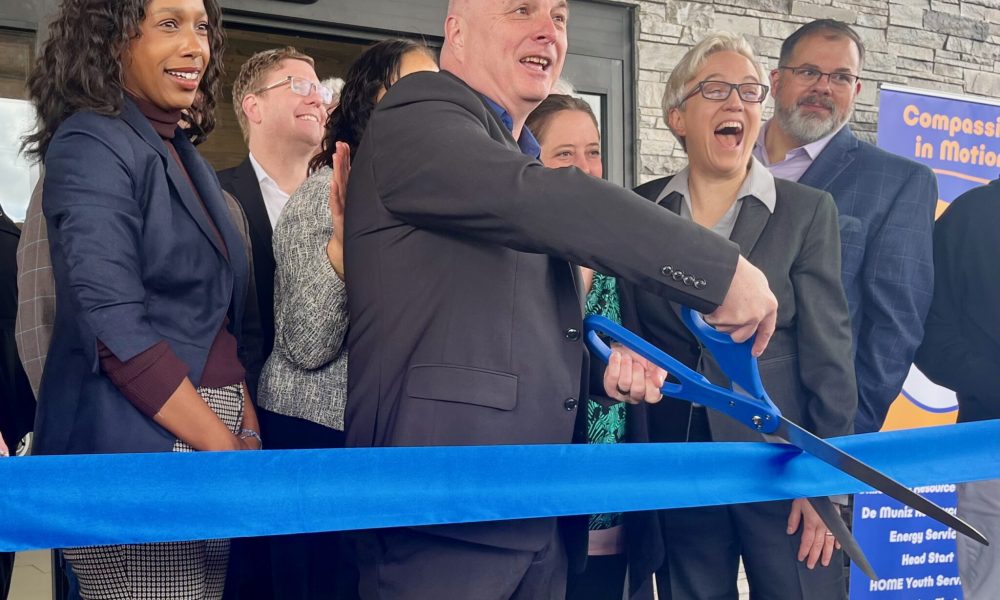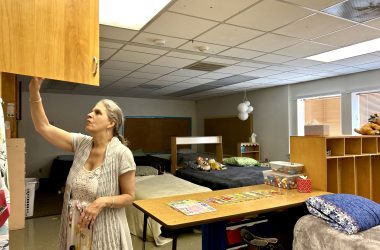Oregon Gov. Tina Kotek signed two more executive orders Tuesday targeting the state’s ongoing homelessness crisis.
The new orders come nearly a year after Kotek declared a state of emergency around homelessness on her second day in office. They also coincide with an announcement from the governor’s office that the state exceeded goals she set to build more shelter beds, provide rent assistance to more Oregonians and help homeless residents into permanent housing.
“When I declared the emergency, I told Oregonians that it would be the first step towards significantly impacting and reducing homelessness in our communities,” Kotek said during a press conference Tuesday.
Kotek set a goal last spring of creating 600 new shelter beds, getting 1,200 homeless people or families into permanent housing and keeping 8,750 struggling families in their homes. Preliminary data provided to her office by Oregon Housing and Community Services showed that the state succeeded in creating 1,032 shelter beds, rehousing 1,293 households and keeping 8,886 families in their homes.
The department won’t share final numbers until late February. By that time, Kotek and Oregon lawmakers will be more than halfway through a short legislative session where they intend to spend more money on housing and homelessness. She has called for another $600 million investment, adding to the $1.2 billion lawmakers allocated last year.
The bulk of that request, $500 million, is to boost the number of homes built in Oregon each year. The state’s housing shortage – experts estimate Oregon needs to build at least 550,000 homes in the next 20 years – has contributed to hiring problems throughout the state, Kotek noted.
“Employers are losing potential hires because people don’t have a place to live,” she said. “Others are forced to commute sometimes hours which leads to higher workforce turnover. And some are leaving the state entirely because of our housing supply crisis. The situation is untenable and the entire state is facing consequences as a result.”
Another $65 million request is to support existing shelters, along with $35 million for rent assistance to keep more people from losing their homes.
The new executive orders Kotek signed Tuesday direct the state’s Interagency Council on Homelessness to provide Kotek with plans for how all state agencies can assist in reducing homelessness and continue the homelessness emergency. She’ll provide new goals for communities around rehousing and preventing homelessness by the end of February based on conversations with local leaders about their needs and capacity.
About 20,000 people were homeless in Oregon on a single night in January 2023, the most recent available data from the U.S. Department of Housing and Urban Development. About 13,000 of those lacked shelter – Oregon was second only to California in the percentage of unsheltered homeless people.
That count was taken before last year’s executive orders and influx of funding. State officials won’t know for months whether the additional shelter space and resources to help people out of homelessness outpaced the increase in homelessness.
The problem was visible even in the State Library, which houses Kotek’s ceremonial office. While she signed executive orders and talked to reporters on the second floor on Tuesday, a handful of people with blankets and bags sought shelter from the Salem rain a floor below. Government employees working to address the state’s homelessness crisis regularly walk past people sleeping on downtown city streets.
“We’re making progress, and we’re starting to see more folks having a place to go instead of living on the streets,” Kotek said. “But we’re not there yet when 20,000-plus Oregonians, according to the most current point in time count, are experiencing homelessness and we know that’s an undercount. That’s way too many people, so we can’t take our foot off the gas here.”
Kotek said she didn’t yet know whether each of the seven regions of the state that received funding through the executive order met their individual goals. Oregon Housing and Community Services has only made publicly available data through Oct. 31, and it showed vast differences in progress toward goals.
The Medford and Ashland area, for instance, shepherded more than 200 households into permanent housing by Oct. 31, surpassing its goal of 133, but it had only built 13 of 67 required shelter beds. On the other hand, Multnomah County surpassed its goal of creating 140 shelter beds but had rehoused only 20% of its goal of nearly 190 families.
Kotek said she was “honestly surprised” that the state was able to meet its ambitious goal of finding permanent housing for more than 1,200 homeless Oregonians. Near the end of last year, she met with housing providers and advocacy groups and personally urged landlords to find an open unit or two that could be a stable home.
“It’s no good just to have a shelter bed,” she said. “If someone’s ready to get housed, we need to get folks rehoused. That also frees up another shelter bed for somebody who needs it.”
Oregon Capital Chronicle is part of States Newsroom, a network of news bureaus supported by grants and a coalition of donors as a 501c(3) public charity. Oregon Capital Chronicle maintains editorial independence. Contact Editor Lynne Terry for questions: [email protected]. Follow Oregon Capital Chronicle on Facebook and Twitter.
STORY TIP OR IDEA? Send an email to Salem Reporter’s news team: [email protected].

Julia Shumway is deputy editor of Oregon Capital Chronicle and has reported on government and politics in Iowa and Nebraska, spent time at the Bend Bulletin and most recently was a legislative reporter for the Arizona Capitol Times in Phoenix. An award-winning journalist, Julia most recently reported on the tangled efforts to audit the presidential results in Arizona.









